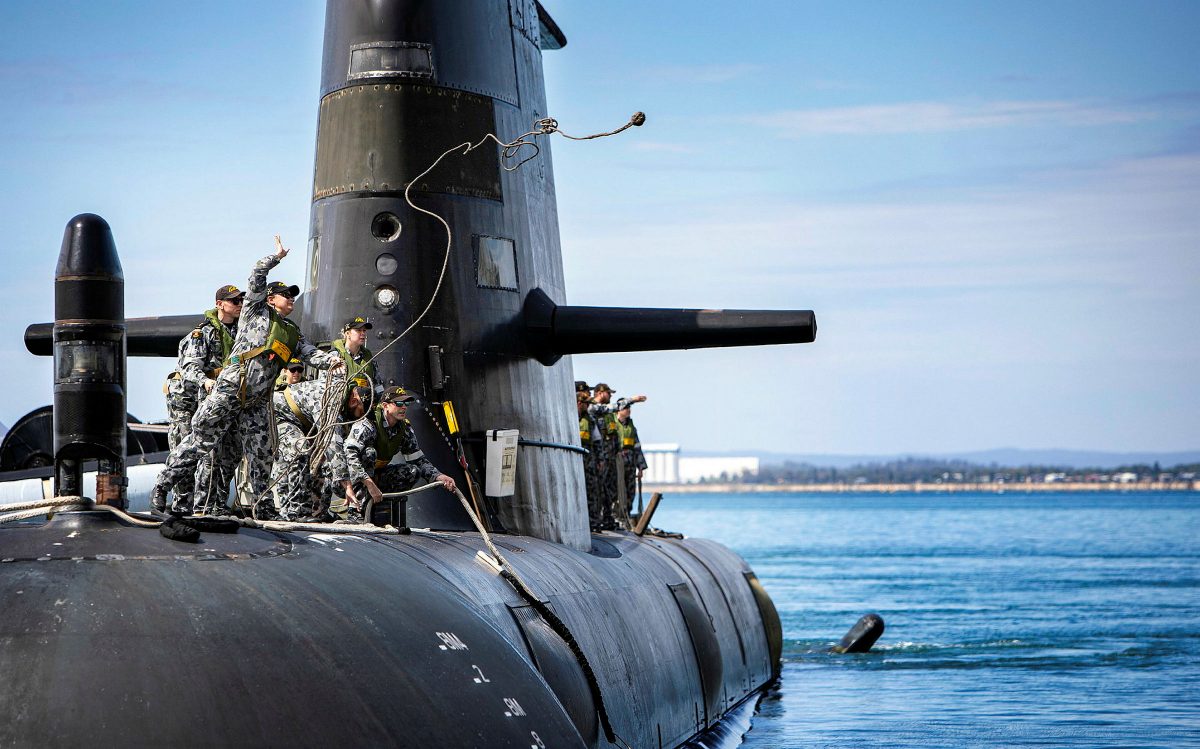
I should start by affirming my support for Australia’s transition to nuclear-propelled attack submarines, or SSNs, as my detailed study, delivered to the Department of Defence in 2013, and my public advocacy implies. I think it is an essential, if challenging, transition that should have started years ago.
In my recent Strategist article, I discussed the workforce needed before Australia owns its first SSN. This is but a portion of the big picture, and I think the media and political focus on when we might commission our first SSN, be it new or a leased second-hand submarine, is misplaced. The date we should be looking at is when we might have a fully operational SSN capability that can be deployed in harm’s way, to defend Australia. That is a vastly different and more challenging set of requirements.
The nuclear-propulsion study that’s now underway will no doubt detail these requirements; the following is my estimate of what will be required, based on modelling of the workforce structures used by the Royal Navy.
What is a fully operational SSN capability? The target should be to replace the Collins-class capability; that is, a submarine force with industrial and logistical support to be able to deploy two boats in harm’s way, under Australian sovereign control.
This will require six SSNs. The same ‘rule of three’ applies to both conventional and nuclear-propelled submarines. With a three-year interval between introducing each boat, driven by the time needed to raise and train the next crew, it will take at least 15 years after the first SSN is commissioned to achieve these numbers. It would be sensible to add a period of final work-up after the sixth SSN is commissioned, say, three years, so that’s 18 years all up. The Collins capability took much longer to deliver, something the navy should learn from.
Preparing trained crews to man the submarines will be a challenge and could well be the critical path determining the timing to achieve the goal of six SSNs. At this point, depending on the crew size, the Royal Australian Navy would have 600–720 personnel in seagoing crews. A spare crew of, say, 20 per submarine (each Collins sub has 13), to provide operational relief and ensure fully crewed boats for deployment, leads to a total submarine arm of 2,160–2,520 (using the rule of thumb that a total submarine arm should be three times the number of personnel at sea). This is two to three times the current size of the RAN’s submarine arm.
Crews are a key ingredient to capability, but as the Defence’s Capability life cycle manual sets out, an operational capability requires all nine elements of the ‘fundamental inputs to capability’. Here are some of the more critical when it comes to SSNs.
In the operational support areas, the sovereign ability to support the submarines with intelligence—backed by high data-rate, discrete satellite communications—and the ability to target Tomahawk missiles will be new requirements.
Based on the Royal Navy and UK regulatory approach, a sovereign support and supervisory capability for the RAN will include uniformed personnel, additional civilian regulators in the Australian Nuclear Science and Technology Organisation and the Australian Radiation Protection and Nuclear Safety Agency, and an industrial workforce. They must be overseen by an independent verification and audit capability. How many trained and experienced people to support six SSNs are we talking about? Based on my modelling, I estimate Australia would need almost 500 trained, experienced and certified personnel.
Fleet Base West near Perth will house both Collins and SSNs at this stage, since there won’t be time to generate the additional 200 nuclear-experienced personnel required for a second submarine squadron on the east coast. Building a base is the first step; training the experienced personnel to man it will be another and the critical path. Fleet Base West will require additional security and certified docking, ship-lift, tug and crane facilities, impacting on the ASC facilities across Cockburn Sound at Henderson.
Meeting the safety case for nuclear requirements will add significantly to base costs and complexity. Protection should include local air defence against drones, seaward defences and surveillance systems protecting against sea mines and intruders. The UK base in Faslane has a squadron of minehunters, several offshore patrol vessels and a company of Royal Marines to provide these services.
We can conclude at this point that while leasing a number of tired, obsolescent SSNs dependent on the Royal Navy or US Navy for crew and supervision may provide a photo opportunity, it wouldn’t amount to an operational, sovereign SSN capability.
Given the time required—18 years from commissioning the first SSN (whenever that might be)—we can also conclude that the RAN is going to need additional conventional submarines to cover the long transition time and avoid the risks and costs of a second life extension to Collins.
Critically, we must increase the number of Australian submariners, enabling us to spare personnel to undertake the long nuclear training and experience pipelines while sustaining an operational Collins-class capability.
Despite the political cost of admitting the current approach is flawed, the government should avoid wasting further time and initiate preparations to build an updated Collins-class submarine in Adelaide.
This program would have the additional benefits of re-establishing a submarine-building capability in Australia prior to building SSNs, exploiting the preparations that were being made for the now-cancelled Attack class and avoiding a Defence and industry workforce ‘valley of death’.

